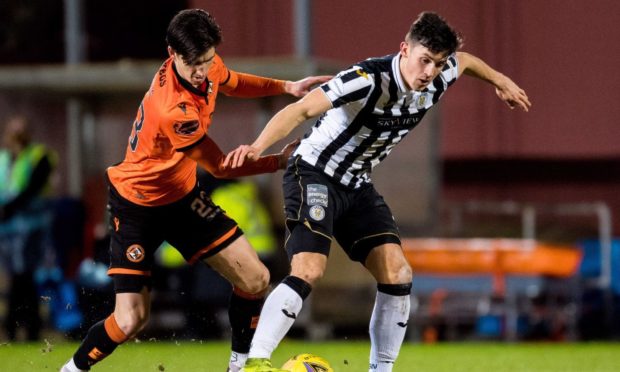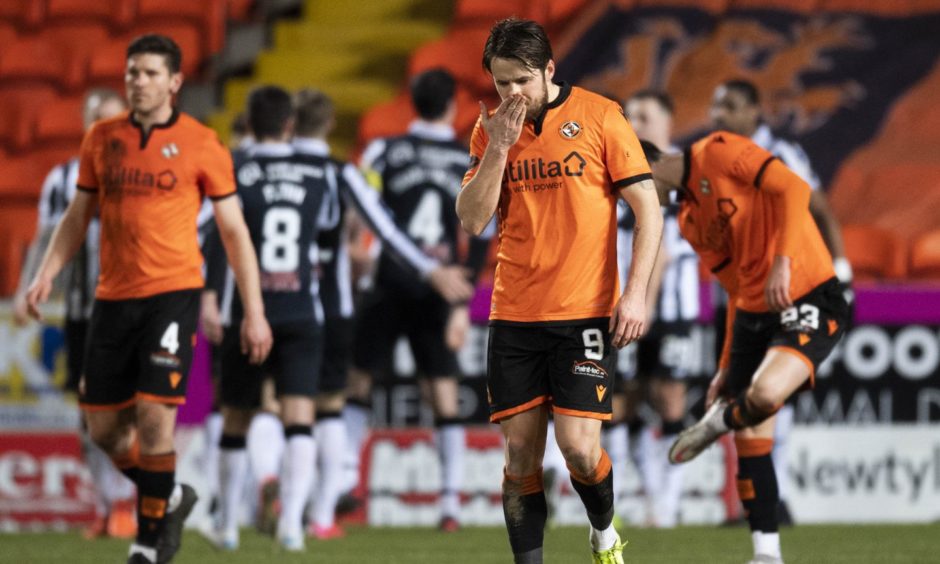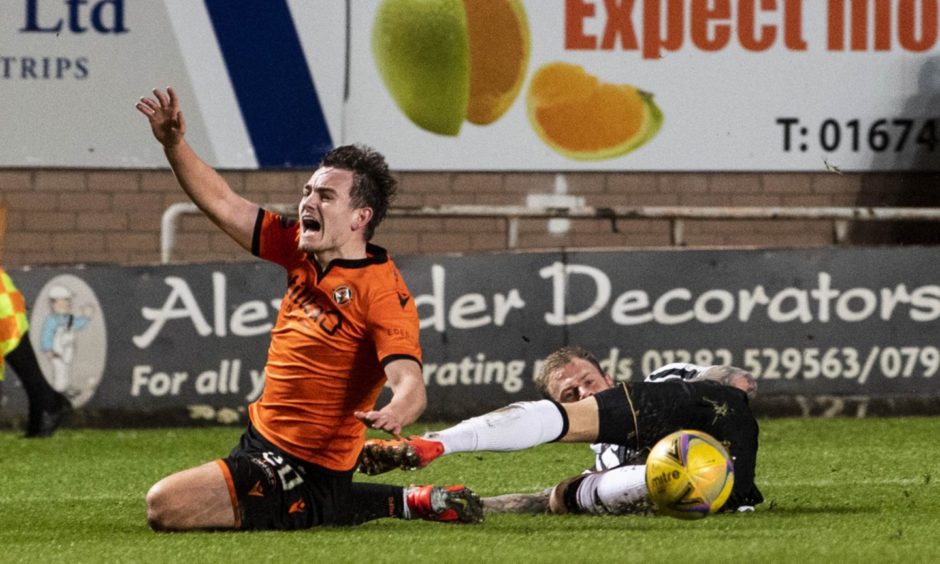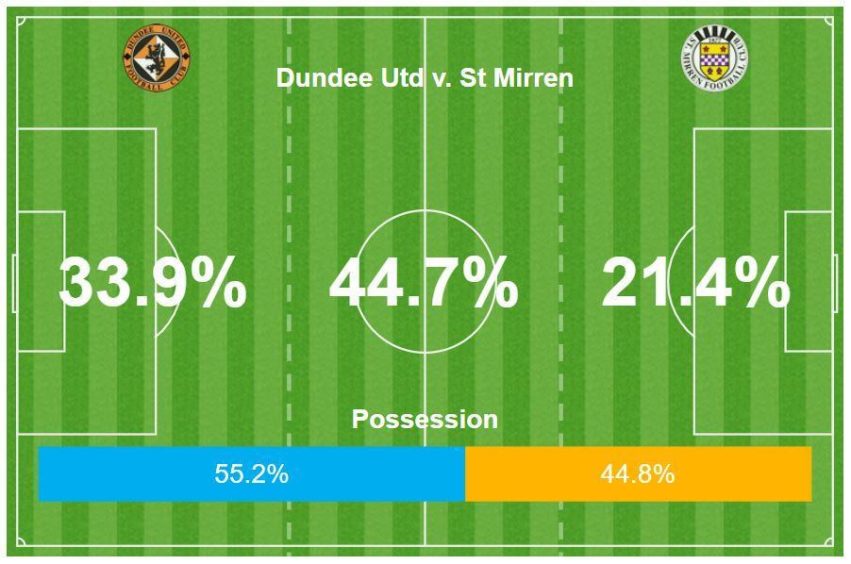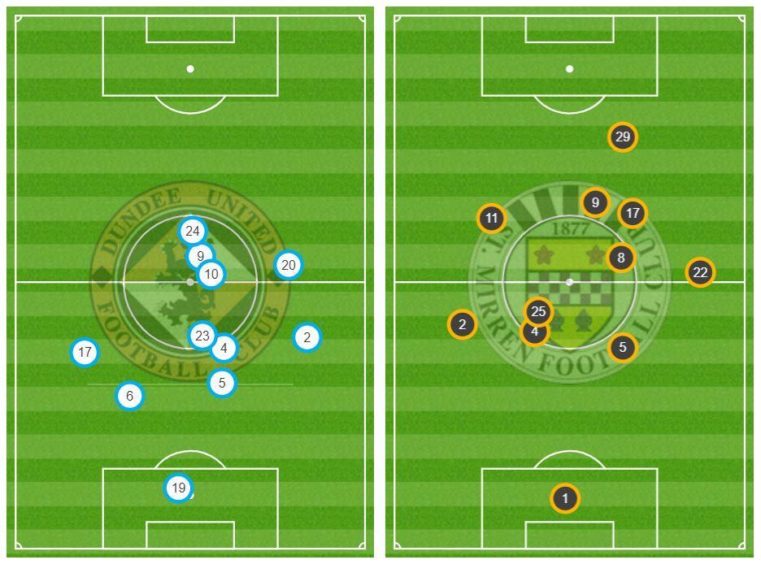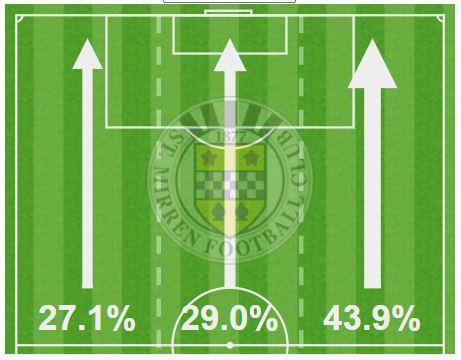It’s fair to say Dundee United fans weren’t happy after their team’s heavy defeat to St Mirren.
Unable to attend Tannadice in person because of the coronavirus pandemic, Arabs vented their frustration at the performance on social media following the 5-1 loss.
Understanding the source of their anger is not difficult.
Shipping five goals at home to a direct league rival is just cause for some online bashing at the best of times.
When it comes during a run of results that has seen the Tangerines win only once in their last 10 games (a 2-0 victory over Kilmarnock just before Christmas) it’s probably to be expected.
Everything fell apart against St Mirren after a crazy opening period and the Terrors never recovered.
But what exactly went wrong?
Decisions go against unlucky United
Although the stats paint an even clearer picture, it was obvious to the naked eye what hindered United – decisions not going their way.
Referee John Beaton ruling against the hosts in three controversial penalty calls was, undoubtedly, crucial to the momentum swinging heavily in St Mirren’s favour.
It was an even, well-matched contest until the whistler waved away home protests on the half-an-hour mark when Luke Bolton went down in the area under the challenge of Richard Tait.
The Saints defender appeared to get the ball. However, United gaffer Micky Mellon was adamant Tait followed through and ‘flicked’ Bolton.
The Buddies raced up the other end a minute later and opened the scoring through Joe Shaughnessy.
The St Mirren captain was in the thick of the action again just before the half as Beaton awarded the Paisley side two spot-kicks.
Even in real time, the first didn’t look like a penalty.
Watching the replay, it’s clear there wasn’t enough contact from United skipper Mark Reynolds to bring Shaughnessy down.
Jamie McGrath dispatched for 2-0 before Beaton adjudged Lawrence Shankland to have handled in the area as he blocked Ryan Flynn’s shot with his ribcage at close range.
McGrath stepped up again to tuck away the Buddies’ third on the stroke of half time.
In fairness to Beaton, it appeared a tough call at full speed.
Luck was certainly not on United’s side and they had a mountain to climb in the second half.
Tangerines control the ball but not territory
Although Ian Harkes pulled one back on 54 minutes with a sublime effort, St Mirren raced away again and took a commanding four-goal lead thanks to substitutes Dylan Connolly and Kristian Dennis.
Both strikes came from breakaways – and that was the Terrors’ downfall all evening.
For all they controlled possession, enjoying 55.2% of the ball, St Mirren bossed the territory and were the team getting into dangerous areas, often on the counter attack.
The ball was in the United half 33.9% of the time compared to 21.4% in St Mirren’s area of the field.
As has become standard, the Tangerines were penned in their own half with St Mirren’s front four – Eamonn Brophy, Jon Obika, Ilkay Durmus and McGrath – all positioned ahead of United’s most advanced man, Shankland (No 24).
When they got into scoring positions, the Buddies were clinical.
The visitors converted five of their six shots on target while United squandered all but one of their four.
The Terrors kept possession well but were often just circulating the ball at the back or in the middle of the park – playing 100 more passes than St Mirren on the night.
The fact United’s back four – Mark Connolly (73), Reynolds (64), Jamie Robson (62) and Liam Smith (59) – topped the Tangerines’ touch table tells its own story.
Terrors struggle to defend left side
It was, particularly, down the left where the Tangerines struggled most as full-back Robson endured a torrid time, losing possession 29 times.
With striker Marc McNulty out of position on the flank in front of him, it was a recipe for disaster.
McNulty (No 9) was constantly drifting inside (as seen in the average position graphic above) towards his natural centre-forward role.
He was effective, it must be said, making three key passes but the system left Robson exposed.
This allowed McGrath and Marcus Fraser free reign on St Mirren’s right as they attacked again and again down that side.
McGrath (18) had almost double the amount of crosses than the hosts’ entire team combined (10), with Fraser also registering seven.
It was a bad day at the office for sixth-placed United and one which saw St Mirren close the gap on them to two points – with the Buddies having three games in hand.
Can Mellon’s side put their worst defeat of the season behind them when they host Hibs on Saturday?
